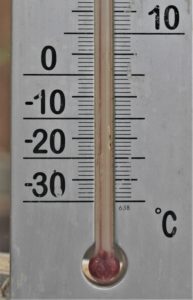Ventilate the Greenhouse on warm days but reduce this when temperatures drop later in the month and the amount of shading, so crops ripen and to avoid problems with grey mould caused by damp air and cooler nights.
Before bringing plants in for overwintering check them for pests and diseases, and treat accordingly. Red spider mite, mealy bug and scale will have thrived during this hot summer and vine weevil, too.
With it is warm and sunny, sow trays, pots or old growing bags with ‘cut and come again crops’ to harvest through autumn and into winter, think land cress, oriental salads, like pak choi, mizuna and mibuna greens plus lettuce, lamb’s lettuce, chicory and radish. Use what’s left in the packets from earlier brassica sowings, then harvest them earlier as microgreens.
Towards the end of the month, lift and pot tender plants for overwintering in a frost-free glasshouse along with divisions of chives, lemon balm, mint and French tarragon, to extend the cropping season.
Check the Greenhouse heater to make sure it’s working and your rolls of bubble wrap insulation for damage and replacing if needed; undamaged strips can be cut into smaller lengths for protecting pots that are being left outdoors. Make sure you have plenty of fixing accessories, too.
Opening the roller blinds during the day and closing them at night conserves heat.
Given the current rise in UK energy prices we should consider the ‘pro’s and con’s’ of insulating and heating your Greenhouse this winter. There has to be a balance between available light, heat conservation and ventilation. If you live in an area where winters are mild, you could gamble on not insulating at all. There is always a possibility of a cold winter, so listen to the weather forecast and have the heater and protective layers of fleece on standby.
Full insulation reduces the amount of light coming into the Greenhouse, increases humidity which can cause disease problems, the air is relatively humid and you have to cut holes for the ventilators, too. Making sure that the doors and windows fit properly prevents heat loss and draughts. Ensure your heater has an accurate thermostat and only heat to the lowest temperature required. Usually, it’s just above freezing. Electric fan heaters are still the most efficient, as they circulate air, reducing chances of fungal diseases. Buy one with a frost-guard feature that activates the heater automatically when the temperature drops. They don’t emit water, soot or carbon monoxide, all of which can adversely affect plants. Gas heaters can be bulky and heavy; paraffin heaters are usually small and lightweight so easy to knock over and a potential fire hazard. You also need to ventilate when using gas or paraffin so it negates any benefits.

Tender plants can survive at 3°C minimum, but a minimum of 7° – 10°C is ideal. You should also decide if it is worth heating a Greenhouse. It is if you have an exotic orchid collection but not if you are overwintering bedding plants which can be bought next year. Please see our heating calculator: https://hartley-botanic.co.uk/guides/greenhouse-power-calculator/
There are alternative options. You can divide the Greenhouse into two halves one with and the other without insulation, dividing the spaces with a curtain of fleece or bubble wrap. I have also successfully overwintered cannas in trays under a Greenhouse bench draped with layers of horticultural fleece to make sure that part of the Glasshouse remains frost free and extended the area heated by the propagator on top of the bench by making a frame of bamboo canes, covered with fleece with the tender plants inside. Whatever option you take, always heat your Greenhouse efficiently and effectively, while doing what’s best for your plants. Happy gardening, Matt.


